E-commerce SEO in 2025: Essential Strategies for Success

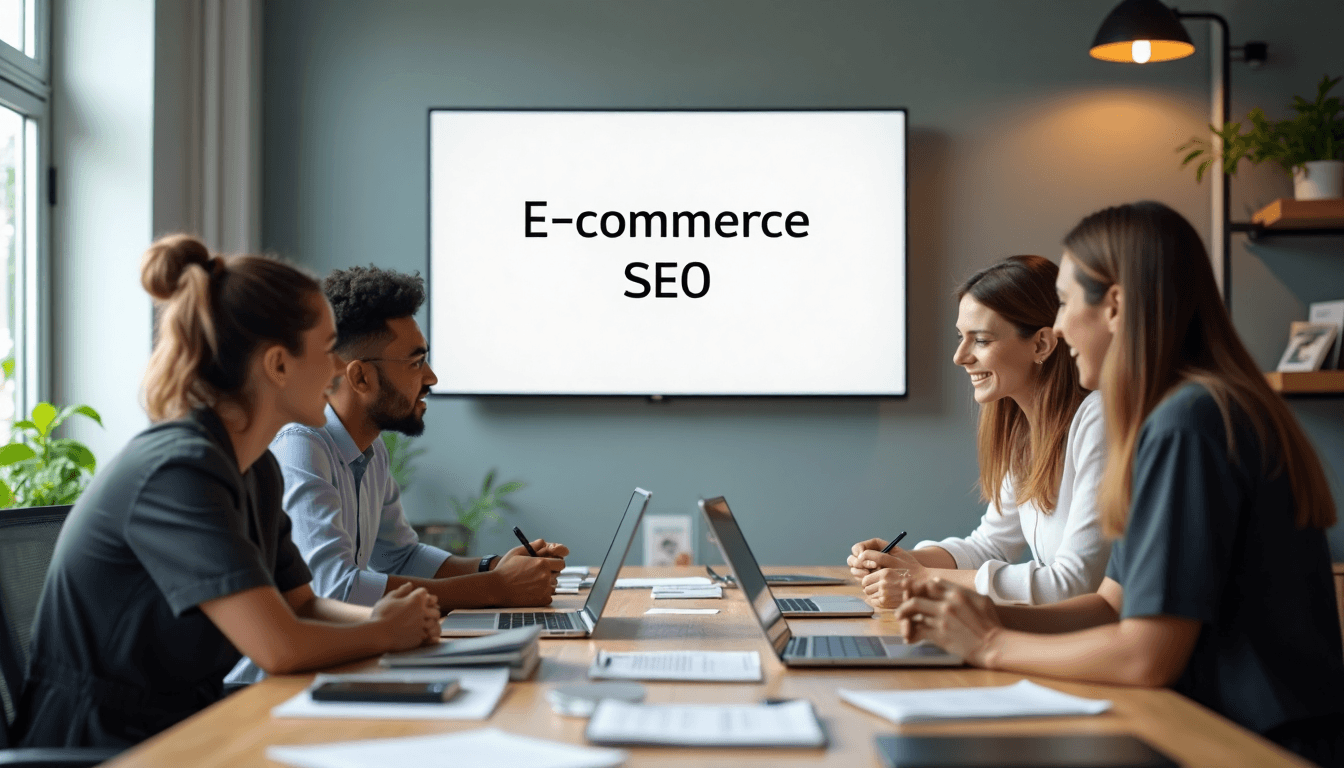
E-commerce giants are rewriting the rules for online success. Sites with a click depth limited to just 3 or 4 levels have seen a massive boost in user engagement and search visibility. That sounds pretty standard, right? Surprisingly, most online stores still overlook this simple structure and end up buried in search results. The real breakthrough comes from blending technical tweaks with smart content and analytics, turning even small e-commerce sites into major players.
Table of Contents
- Optimizing Your E-commerce Site Structure
- Boosting Product Page Visibility With Seo
- Content Strategies To Attract And Convert Customers
- E-commerce Seo Analytics And Ongoing Optimization
Quick Summary
| Takeaway | Explanation |
|---|---|
| Optimize Site Structure | Develop a clear, logical hierarchy with 3-4 levels to enhance navigation and search engine understanding, improving user experience and visibility. |
| Craft Compelling Product Descriptions | Write unique and detailed descriptions addressing customer concerns, which naturally include targeted keywords to boost SEO and conversions. |
| Leverage User-Generated Content | Incorporate customer reviews and testimonials to build trust and influence purchasing decisions through authentic social proof. |
| Employ Advanced Analytics Strategies | Use tools like Google Analytics to track organic traffic, conversion rates, and keyword rankings, enabling ongoing performance improvement in SEO efforts. |
| Conduct Proactive SEO Audits | Regularly assess technical health, content relevance, and competitive analysis to stay ahead of algorithm changes and maintain search performance. |
![]()
Optimizing Your E-commerce Site Structure
E-commerce site structure determines how easily customers navigate your online store and how search engines understand and rank your content. A strategic website architecture directly impacts user experience, conversion rates, and search engine visibility.
Creating a Logical Website Hierarchy
Building an intuitive site structure starts with organizing products and content in a clear, hierarchical manner. According to research published in 2024, effective e-commerce websites limit click depth to 3-4 levels, ensuring users can find products quickly without excessive navigation.
A robust hierarchy involves developing comprehensive categories and subcategories that reflect user search behavior. For instance, instead of a generic "Clothing" category, break it down into more specific segments like "Mens Sportswear," "Womens Casual Wear," or "Children's Outdoor Apparel." This granular approach helps both users and search engines understand your site's content organization.
Implementing Strategic URL Structures
URL structure plays a critical role in E-commerce SEO. Clean, descriptive URLs that incorporate relevant keywords provide multiple benefits. The 2024 research highlights that logical URL structures enhance site navigation and search engine crawlability.
Optimal URL formats might look like:
- www.yourstore.com/mens-clothing/sportswear/running-shorts
- www.yourstore.com/electronics/smartphones/android-phones
These structured URLs offer immediate context about page content, improving user understanding and search engine indexing. They also naturally incorporate important keywords without appearing manipulative.
Advanced Internal Linking Strategies
Internal linking serves as a powerful mechanism for distributing link authority and guiding user journeys. A comprehensive study in 2023 emphasized that strategic internal linking keeps users engaged longer and helps search engines comprehend site relationships.
Effective internal linking approaches include:
- Related Product Connections: Link similar or complementary products within product pages
- Category Cross-Referencing: Connect related category pages to provide broader navigation options
- Contextual Blog Linking: Use blog content to link back to relevant product pages
The transformation-based adaptive website structure optimization model suggests considering factors like display time, aesthetic appeal, and customer preferences when designing these linking strategies.
Remember that site structure is not static. Continuous analysis of user behavior, search performance, and emerging trends will help you refine and optimize your e-commerce website architecture. Regular audits and incremental improvements ensure your site remains competitive and user-friendly.
By implementing these structured approaches, you create a robust foundation for E-commerce SEO success, balancing technical optimization with exceptional user experience.

Boosting Product Page Visibility With SEO
Product page visibility represents a critical component of e-commerce success. Search engine optimization transforms product pages from mere digital catalogs into powerful conversion tools that attract, engage, and persuade potential customers.
Crafting Compelling Product Descriptions
Product descriptions serve as the cornerstone of SEO optimization. Research from Coursera emphasizes the importance of creating unique, detailed content that goes beyond basic specifications. High-performing product descriptions incorporate targeted keywords naturally, address customer pain points, and highlight unique value propositions.
Effective descriptions should:
- Answer Specific Customer Questions: Anticipate and address potential buyer concerns
- Use Natural Language: Write conversationally while integrating strategic keywords
- Provide Comprehensive Details: Include materials, dimensions, use cases, and potential benefits
Optimizing Visual and Technical Elements
Mobile responsiveness research indicates that product pages must perform exceptionally across all devices. Technical optimization involves multiple critical factors:- Image Optimization: Compress images while maintaining high quality
- Schema Markup: Implement structured data to help search engines understand product details
- Page Speed: Minimize loading times through efficient coding and content delivery networks
Visual elements play a crucial role in product page SEO. High-quality images with descriptive alt text not only improve accessibility but also provide additional opportunities for keyword integration. Consider including multiple product angles, zoom capabilities, and context-based imagery that demonstrates product usage.
Strategic Internal Linking and Navigation
Higher Visibility research highlights the significance of intelligent internal linking strategies. Effective navigation helps both users and search engines understand product relationships and site hierarchy.Key internal linking approaches include:
- Connecting related products within similar categories
- Creating contextual links from blog content to product pages
- Developing clear, intuitive navigation paths
Additionally, implement breadcrumb navigation that shows users their current location within the site structure. This not only improves user experience but also provides search engines with clear contextual information about product placement.
Remember that product page SEO is an ongoing process. Continuously analyze performance metrics, user behavior, and search engine rankings to refine your approach. Regular updates, fresh content, and responsive design will keep your product pages competitive in the dynamic e-commerce landscape.
By implementing these comprehensive strategies, you transform product pages from static listings into dynamic, searchable assets that drive visibility, engagement, and ultimately, conversions.
Content Strategies to Attract and Convert Customers
Content serves as the critical bridge connecting potential customers to your e-commerce offerings. Strategic content development transforms passive browsing into active engagement and purchasing decisions.
Storytelling and Brand Narrative
Research from ResearchGate reveals that storytelling can improve brand recall by 30%. Compelling narratives go beyond product descriptions, creating emotional connections that motivate customers to explore and purchase.Effective storytelling strategies include:
- Origin Stories: Share your brand's founding journey
- Customer Success Narratives: Highlight real user experiences
- Behind-the-Scenes Content: Showcase product creation and company values
These narrative approaches transform products from mere commodities into meaningful experiences customers want to be part of.
Leveraging Advanced Content Generation
Artificial intelligence research demonstrates that Large Language Models can enhance marketing copy, generating content that increases click-through rates by 12.5% and conversion rates by 8.3%. Modern e-commerce content strategies now integrate AI-powered tools to create more personalized, engaging materials.AI-enhanced content generation offers multiple advantages:
- Personalization at Scale: Craft targeted content for different customer segments
- Rapid Iteration: Quickly produce multiple content variations
- Data-Driven Insights: Utilize machine learning to understand customer preferences
User-Generated Content and Social Proof
User-generated content represents a powerful trust-building mechanism. Incorporating customer reviews, testimonials, and social media interactions provides authentic validation that significantly influences purchasing decisions.
Strategic approaches to user-generated content include:
- Encouraging customer reviews through incentive programs
- Creating shareable product experiences
- Featuring customer stories across marketing channels
By integrating these diverse content strategies, e-commerce businesses can create a dynamic, engaging digital environment that not only attracts customers but transforms casual browsers into committed buyers. The key lies in understanding your audience, leveraging technological innovations, and maintaining an authentic brand voice that resonates with your target market.
Remember that content is not static. Continuously analyze performance metrics, gather customer feedback, and adapt your strategies to remain competitive in the evolving digital marketplace.
E-commerce SEO Analytics and Ongoing Optimization
Effective SEO is not a one-time task but a continuous process of monitoring, analyzing, and adapting to changing digital landscapes. E-commerce businesses must develop robust analytics strategies to maintain and improve their search engine performance.
Advanced Performance Tracking and Metrics
Research from the U.S. Trade Department highlights the critical importance of comprehensive performance monitoring using tools like Google Analytics and Google Search Console. These platforms provide deep insights into organic traffic patterns, user behavior, and keyword effectiveness.Key performance metrics to track include:
- Organic Traffic Volume: Monitor overall search-driven visitor numbers
- Conversion Rates: Analyze how search traffic translates into purchases
- Keyword Rankings: Track position changes for critical search terms
- Bounce Rates: Understand user engagement and content relevance
Here is a summary table outlining essential e-commerce SEO metrics and their purposes for effective ongoing optimization:
| Metric | Purpose | Benefit |
|---|---|---|
| Organic Traffic Volume | Measures visitors from search engines | Tracks growth and visibility |
| Conversion Rates | Tracks % of visitors who purchase | Assesses sales effectiveness |
| Keyword Rankings | Monitors position of targeted keywords | Optimizes for search performance |
| Bounce Rates | Measures users leaving after one page | Gauges engagement & content match |
Implementing Deep Learning Optimization
Cutting-edge research demonstrates the potential of deep learning systems in generating targeted landing pages. These advanced algorithms can create millions of optimized pages that precisely match user search intentions, dramatically improving organic search visibility.Strategic deep learning approaches involve:
- Intention-Based Page Generation: Creating content that directly addresses specific user queries
- Dynamic Content Adaptation: Continuously refining page content based on performance data
- Predictive SEO Modeling: Anticipating and responding to potential ranking changes
Proactive SEO Audit Strategies
Ongoing audit research emphasizes the importance of regular, comprehensive SEO assessments. These audits help businesses stay ahead of algorithm changes and technical challenges that could impact search performance.The following table organizes recommended elements to review during an e-commerce SEO audit for ongoing optimization:
| Audit Element | Description |
|---|---|
| Technical Health Check | Test site speed, crawlability, and mobile use |
| Content Relevance & Quality | Assess content value and keyword targeting |
| Competitive Analysis | Evaluate competitor strengths & weaknesses |
| Mobile Responsiveness | Check performance across device types |
| Site Speed Optimization | Improve load times and user experience |
Comprehensive audit processes should include:
- Technical website health checks
- Content relevance and quality assessments
- Competitive landscape analysis
- Mobile responsiveness evaluations
- Site speed and performance optimization
Successful e-commerce SEO analytics go beyond simple number tracking. They require a holistic approach that combines data-driven insights, technological innovation, and strategic adaptation. By implementing these advanced analytics strategies, businesses can create a dynamic SEO ecosystem that continuously evolves to meet changing search engine requirements and user expectations.
Remember that SEO is not a static discipline. The most successful e-commerce sites treat optimization as an ongoing journey of learning, testing, and refining their digital presence. Stay curious, remain adaptable, and continuously invest in understanding your digital performance landscape.
Frequently Asked Questions
What is the importance of site structure in e-commerce SEO?
A clear and logical site structure enhances navigation and helps search engines understand your content, leading to improved user experience and higher visibility in search results.
How can I optimize my product descriptions for SEO?
Craft unique, detailed product descriptions that address customer concerns and naturally incorporate targeted keywords to boost search engine ranking and conversion rates.
Why should I leverage user-generated content in my e-commerce strategy?
User-generated content, like reviews and testimonials, builds trust and social proof, significantly influencing purchasing decisions and enhancing the authenticity of your brand.
What are some key metrics to track for e-commerce SEO performance?
Important metrics to monitor include organic traffic volume, conversion rates, keyword rankings, and bounce rates. These provide insights into site performance and user engagement.
Ready to Build a Winning E-commerce SEO Strategy in 2025?
Are you struggling to keep your online store's product pages visible and engaging, even after fine-tuning site structure and content? If challenges like managing logical hierarchies, crafting unique product descriptions, or keeping up with ongoing SEO analytics feel overwhelming, you're not alone. Many businesses get stuck trying to balance technical SEO and content creation, losing ground against faster, smarter competitors. Now is the time to work smarter—not harder—with an AI-driven platform that turns your SEO potential into real results.
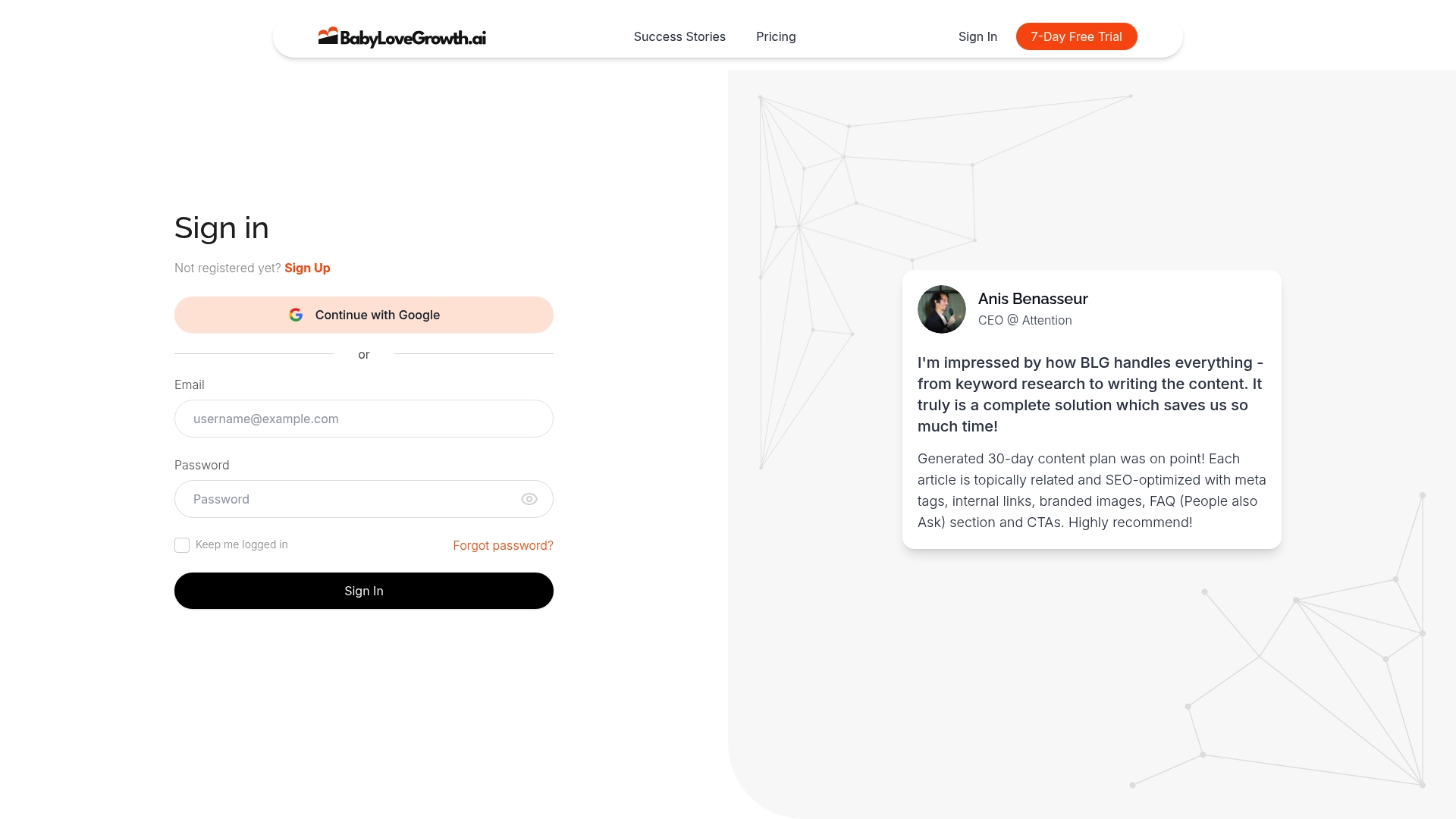
Take the next step toward dominating search rankings and fueling your organic growth. With BabyLoveGrowth.ai, you can automate your content generation, get a custom plan tailored to your business, and unlock the consistent online visibility your store needs. Start today to let AI handle the heavy SEO lifting so you can focus on growing your brand and connecting with customers. Discover how effortless e-commerce SEO in 2025 can be.
Recommended Articles
- BabyLoveGrowth | The #1 Ranked AI Writer for SEO
- SEO Trends for 2024: Key Shifts Every Marketer Should Know
- SEO Importance for Businesses in 2025: Key Benefits and Strategies
- The Importance of Organic Traffic for Business Growth in 2025
- SEO Strategies for Bloggers: Proven Tactics for 2025 Success
- Winning SEO Outreach Strategies for 2025: Guide for SMBs
Smart SEO,
Faster Growth!
Most Read Articles
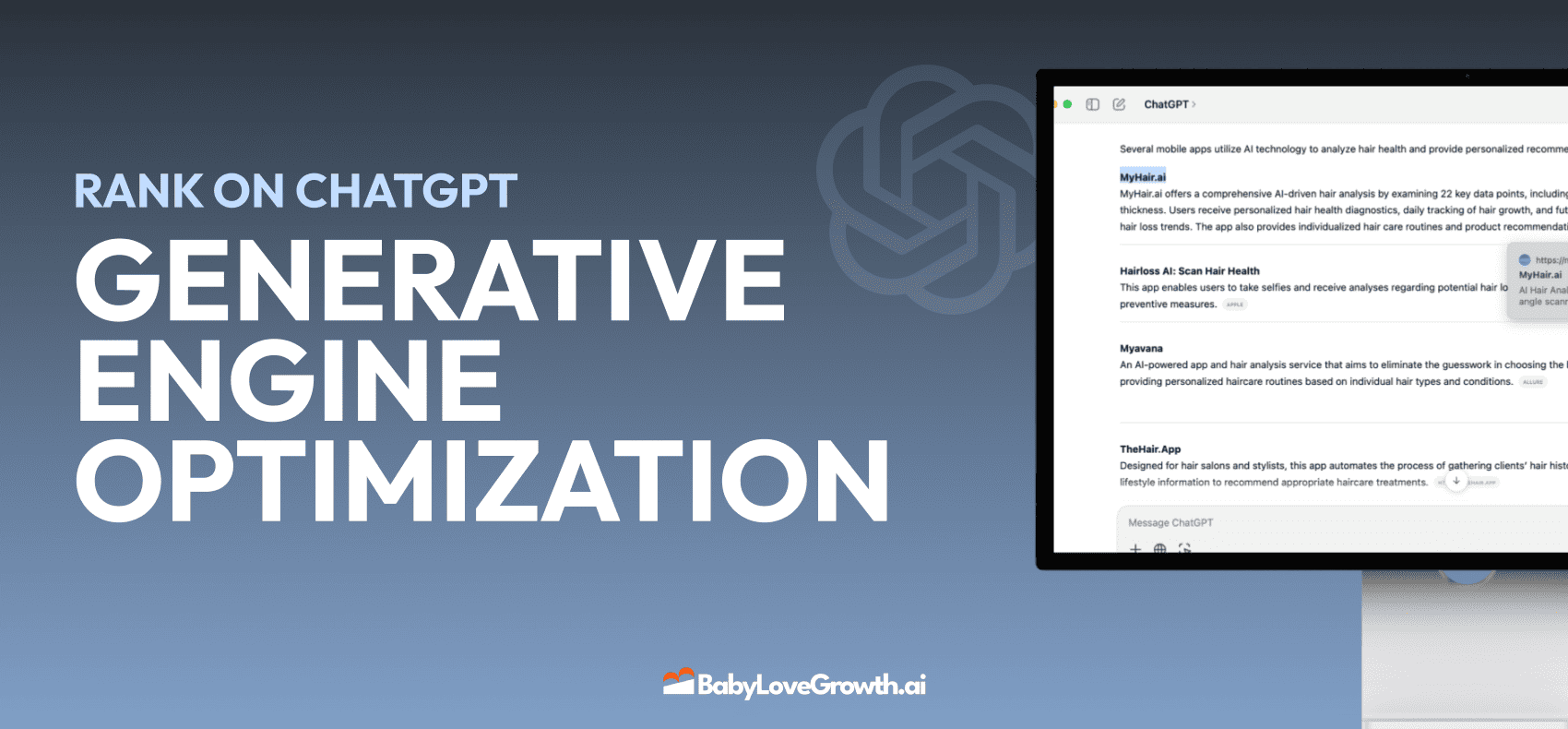
Generative Engine Optimization (GEO)
Learn how Generative Engine Optimization (GEO) helps your content rank in AI search engines like ChatGPT and Google AI. This comprehensive guide explains the differences between SEO and GEO, why it matters for your business, and practical steps to implement GEO strategies for better visibility in AI-generated responses.
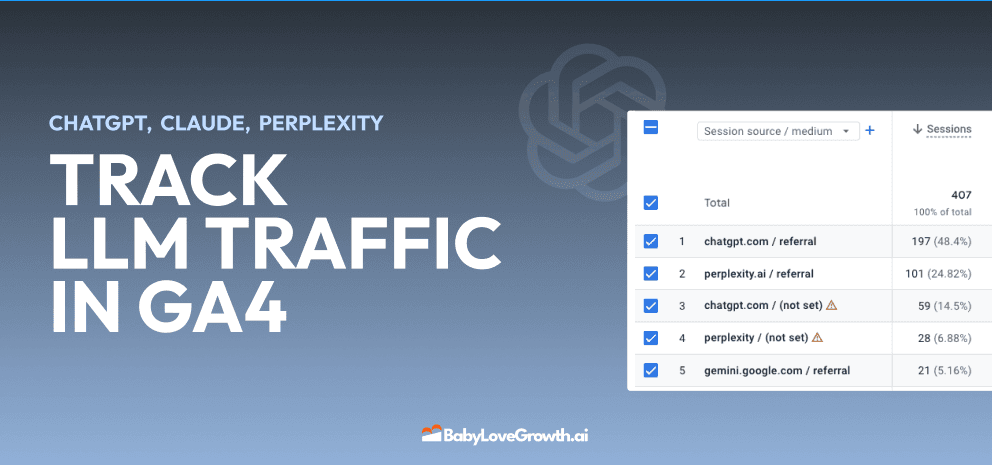
Track LLM Traffic in Google Analytics 4 (GA4)
Learn how to track and analyze traffic from AI sources like ChatGPT, Claude, Perplexity, and Google Gemini in Google Analytics 4. This step-by-step guide shows you how to set up custom filters to monitor AI-driven traffic and make data-driven decisions for your content strategy.
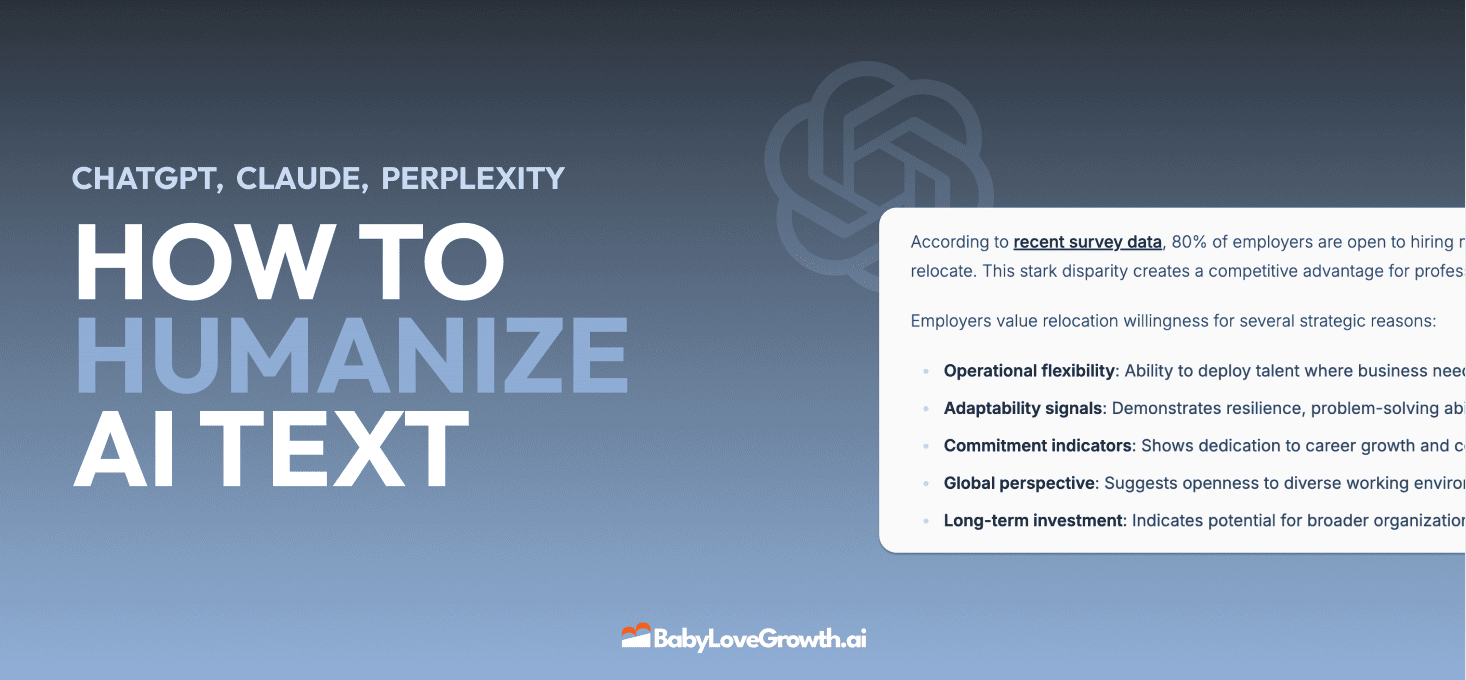
How to Humanize AI Text with Instructions
Learn practical techniques to make AI-generated content sound more natural and human. This guide covers active voice, direct addressing, concise writing, and other proven strategies to transform robotic text into engaging content.
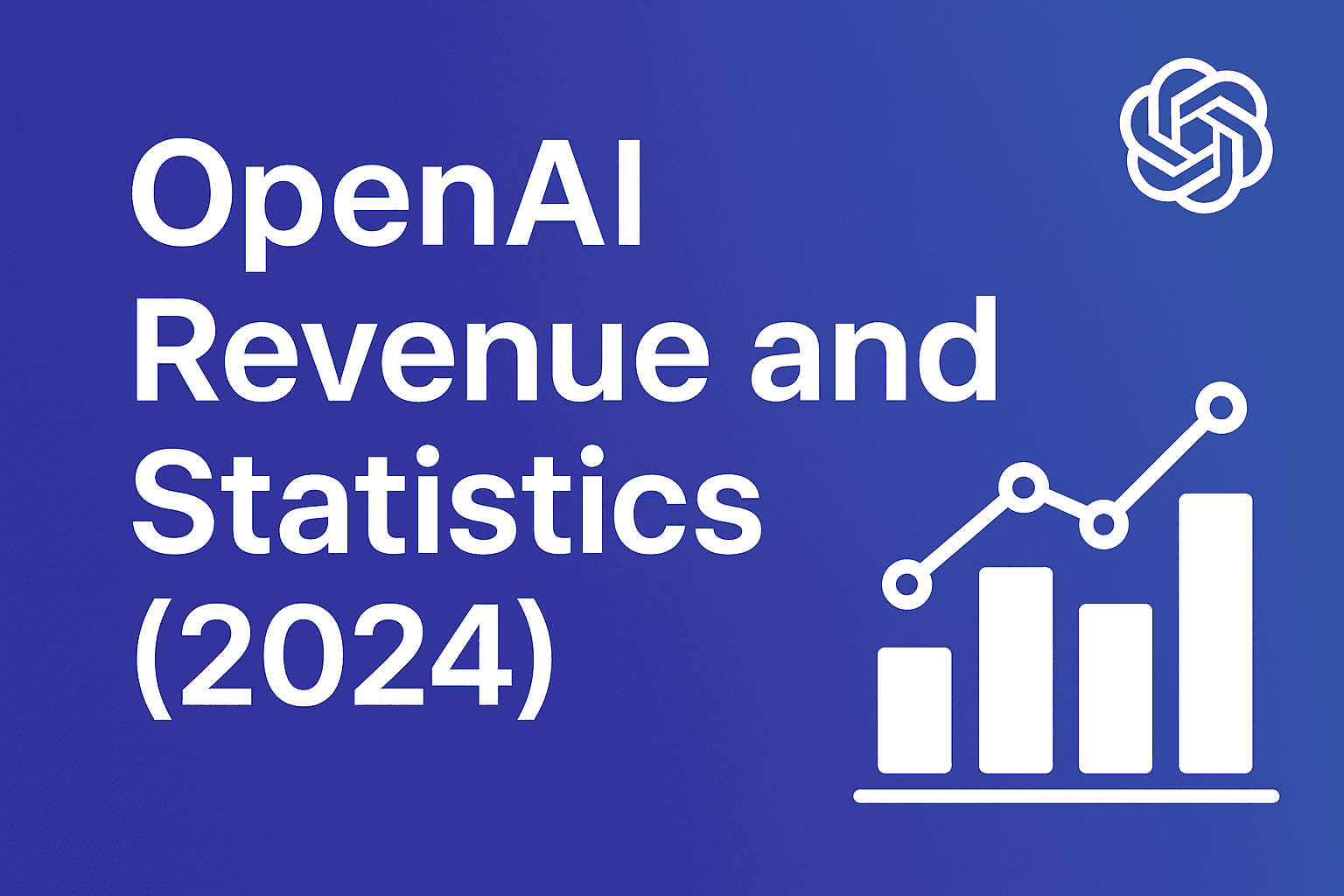
Open AI Revenue and Statistics (2024)
Comprehensive analysis of OpenAI financial performance, user engagement, and market position in 2023. Discover key statistics including $20B valuation, $1B projected revenue, and 100M+ monthly active users.